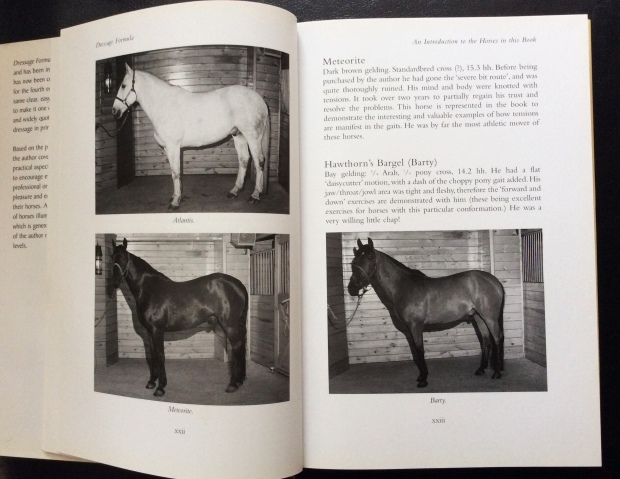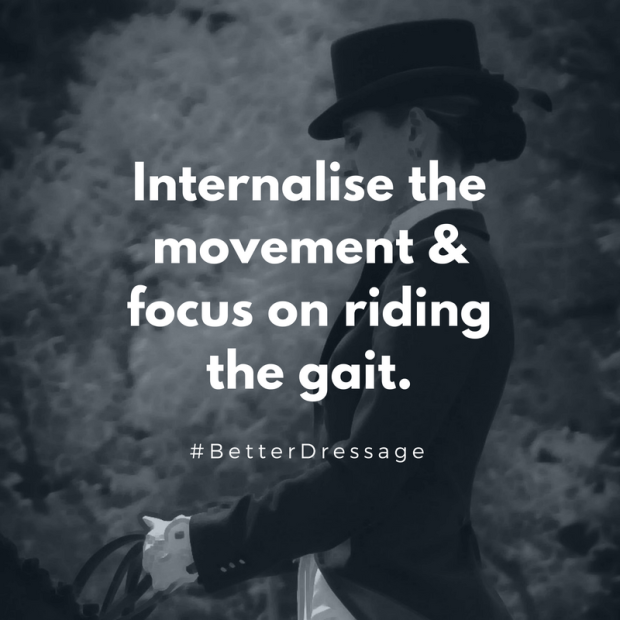
When I was eighteen years old I bought a copy of Erik Herbermann’s “Dressage Formula”. At that point in my life I was trying to train a grumpy 14hh show jumping pony and a green 6-year-old OTTB. I had a great thirst for knowledge but knew very little. I was earnestly trying to put into practice what I read and so the wrong books could have been a real problem. I could not have bought a better book than “Dressage Formula” though. There is such a wealth of information in it that I will always be able to pick it up and learn. It is written by one of the world’s greatest horsemen after all. But if you are new to dressage, as I was then, it is accessible and the format is absolutely reader friendly. As you can see in these photos, there are illustrations throughout, bullet point lists break down the ideas very clearly, everything is streamlined and simplified. You could not possibly end up confused by this book.
One of the things I have always loved about this work is the choice of horses that Erik Herbermann chose to feature throughout.

Atlantis – a 16.1hh Percheron – Thoroughbred cross. Atlantis is described as having ‘Klunky’ gaits, he was a family hack and hunter who started his training with the author at the age of 10.
Meteorite – a 15.3hh Standardbred cross who had been down the severe bit route and utterly ruined. Herbermann states that his ‘mind and body were knotted with tensions’ but that he was by far the most athletic mover of the horses featured in the book.
Barty – a 14.2hh Arab x Pony with choppy gaits and a thick-set throat area. Barty is described as having a very willing disposition.
Not only are these horses relatable for so many riders but, through the pages of the book, we get to see them transformed in the hands of a master horse trainer. Sadly this is not something that we often see! I have this book to thank for the initial understanding that there are great riders out there who love and totally see the point in training the ‘ordinary’ horse. If anything it helped a young person validate her instinct that these horses are perhaps the most interesting of all to work with and help.
Erik Herbermann’s love and respect for the horse shines through in every line of this book. It is a serious work, suited to the most expert riders and yet it made sense to me when I knew very little. That is rare too and I suspect it is a reflection on the brilliance of the author. Whatever stage you are at in your dressage education and whatever the challenges you face with your horse I would absolutely recommend buying a copy!

“Dressage Formula” by Erik Herbermann was published by J A Allen and is available from ABE Books and Amazon as well as from Trafalgar Square Books as an audio CD

You must be logged in to post a comment.